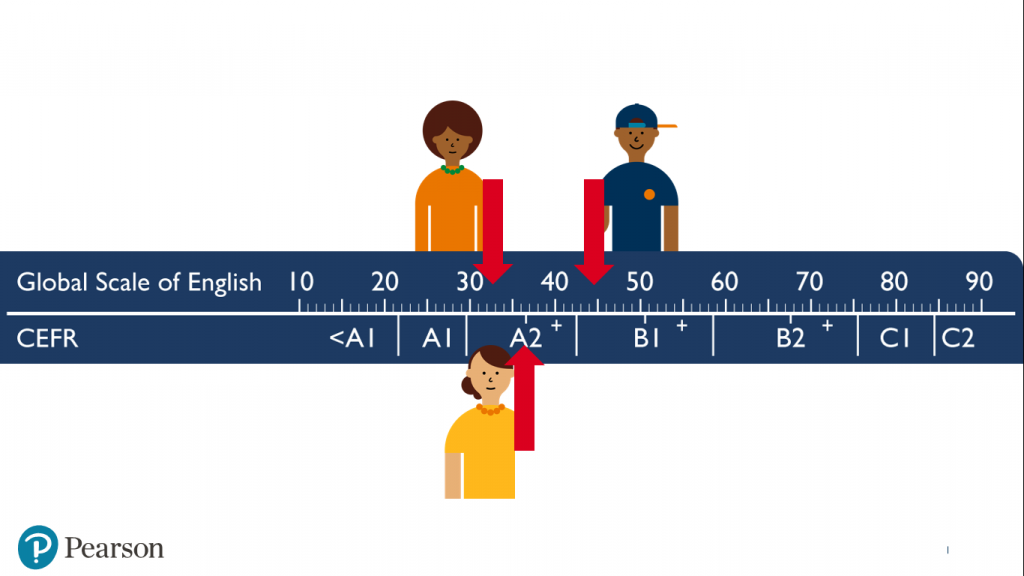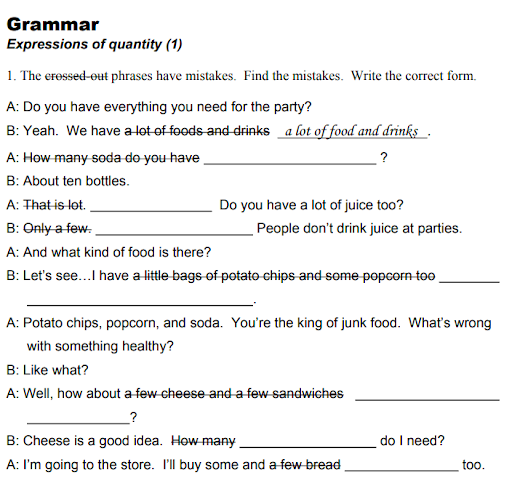GSE Teacher Toolkit Top 10: Teaching mixed ability classes
Sara Davila is a Learning and Language Acquisition Expert. She has experience in teaching, researching, teacher training and creating learning materials. As one of the foremost experts on the Global Scale of English, Sara has been sharing her top ten uses of the GSE Teacher Toolkit for language teachers in a series of ten blog posts.
Today’s article is number one in the top ten countdown. It provides a step-by-step guide to using the toolkit to support learners at different levels of ability.
One of the biggest challenges for language teachers is teaching a mixed ability class. Students with different levels and abilities will always be present in our classrooms. So, how can we use the GSE Teacher Toolkit to improve mixed ability teaching? Let’s find out.
How to teach mixed-ability classes
Differentiated instruction is the best way to address the challenges of mixed ability classrooms. This is a method that helps teachers adjust aspects of the curriculum to match the different levels of students.* This practice ensures that all learners are meeting course outcomes, even though their learning experience may be varied and different.
In order to differentiate instruction and support students with different needs, teachers can change:
- the content being taught
- the process used to teach
- the product students create
- the environment where learning takes place
Adjusting the content tends to be the most obvious way to support learners. So, teachers who want to engage with differentiated instruction in mixed ability classrooms often find themselves producing a lot of content. This is great as a way to support learners. But creating new content or leveling existing content is time-consuming, and it can become a real challenge for teachers.
Content vs process
Instead of adjusting your content, you can use the GSE Teacher Toolkit to adjust your process. When you’re not creating lots of new content, you’ve got more time to consider how to teach new language to your students, and how they can show what they’ve learned. The GSE Teacher Toolkit helps teachers to focus on the process and language production of learners, rather than the content you are teaching.
This means less work for you, and more engagement from your students, no matter what their level is. And the GSE Teacher Toolkit can help you understand the skills we can expect students to demonstrate. So how does this work in practice? Let’s take a look.
Differentiated instruction in practice
Let’s apply differentiated instruction, using the GSE Teacher Toolkit, to a complicated grammar lesson for a mixed classroom where some students are still A2, most are A2+ and a few are emerging B1.
We’ll use this free worksheet available in the GSE Teacher Toolkit, under the grammar tab. This worksheet is related to the grammar objective:
Can use ‘all of’, ‘none of’, and ‘most of’ to describe subsets and proportions of groups of people and things
and the first exercise focuses on ‘a little of’ and ‘a lot of’.
Now that you have the content for your students, it’s time to think about how to differentiate the lesson.
One option would be to create two new worksheets, at an A2 level, and an A2+ level – but as noted above, it’s a lot of work. Additionally, creating levelled worksheets means that you may actually be preventing your students from making progress by not adding enough challenge.
To differentiate appropriately, it’s best to focus on the process that students will use – in this case, editing. In the GSE Teacher Toolkit, this kind of editing is an A2+ level skill. So, the A2+ and B1 students should be able to complete this worksheet.
However, it might be a bit challenging for the A2 students. Therefore, you can look in the GSE Teacher Toolkit to find what writing skills you can expect from your A2 students. There are two skills that can be used to process this grammar point:
Now that you understand the difference in process for students at different levels, it’s time to plan your lesson.
How to differentiate process
By the end of the lesson all students will be able to identify and correct errors in simple sentences to demonstrate the ability to use ‘all of’, ‘none of’, ‘most of’, ‘a lot of’, and ‘a little of’ correctly in writing.
You can adjust the process to support students at all levels of ability.
Lesson Procedure for the Worksheet |
How the process is differentiated to support all learners |
1. Ask all students to read the crossed out errors in the worksheet and underline specific mistakes. |
This supports A2 students the most. However, it’s useful for all students. |
2. Ask students in groups to discuss the mistakes. A2+ and B1 students will guide a discussion to create a series of “rules” to correct the mistakes in highlights. |
This will be the most useful to A2+/B1 students while challenging your A2 students. Using groupwork allows more skilled students to support their peers. |
3. All students will submit their grammar rules as group work. |
This allows A2+/B1 students to help A2 students express grammar rules in their own words, to help improve understanding and use. |
4. When finished all students complete the worksheet. |
All students, from A2-B1 can now complete the worksheet. |
5. After completing the worksheet, all students will be asked to highlight the correction in the new sentences. |
Completing the worksheet may have been easier for your A2+/B1 students. |
6. Finally, all students will write a new sentence using the target language. Each student chooses one student to collaborate with. |
Adding this extra step ensures that all students make progress by asking them to transfer their knowledge and demonstrate learning by creating something new. |
7. Partners review each other’s sentences and underline any errors in the use of quantifiers. Partners can point out the rules that need to be applied, and do a final review once changes have been made. |
Applying the grammar rules that learners created to the new sentences helps to fully internalize the language of the lesson for all of your students at every level. |
8. Students review peer corrections and create final sentences to submit to the teacher. Students submit all work, including original worksheet, sentences submitted to peers, peer-reviewed sentences with underlines and rule guidance, and final correct sentences. |
Now, all students from A2-B1 have had an opportunity to understand the rules, clarify, and demonstrate knowledge of the grammar point.
|
This differentiated process primarily supports the students whose level is slightly lower. However, all students will benefit from the change in process, which gives them a chance to deepen their understanding of the grammar rules.
And, as you can see, students write rules, create new sentences, and conduct a peer review. All of this work is created and completed by the students. As the teacher, you don’t need to create a new worksheet to teach a differentiated class. The GSE Teacher Toolkit can help you to find a solution that creates more work for students and less work for the teacher.
Learn more
If you are interested in differentiated instruction, the model of differentiated instruction I recommend is thoroughly researched and detailed by Carol Ann Tomlinson. And for more uses of the GSE Teacher Toolkit, there is a whole section dedicated to GSE on our blog. You’ll find articles on how to use the toolkit to assess performance, target the right learning zone, and planning for progress. If you need to teach grammar and vocabulary, the GSE Teacher Toolkit is there to support you.
The post GSE Teacher Toolkit Top 10: Teaching mixed ability classes appeared first on Resources for English Language Learners and Teachers | Pearson English.
Source: (https://www.english.com/blog/gse-teacher-toolkit-top-10-mixed-ability-classes/)


Comments
Post a Comment